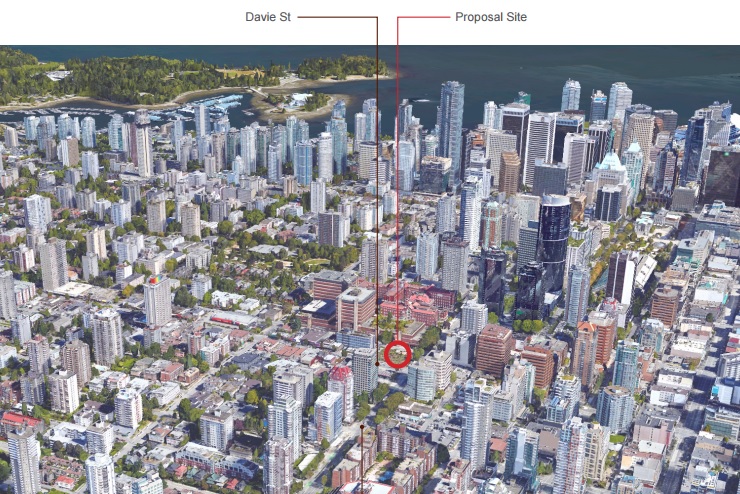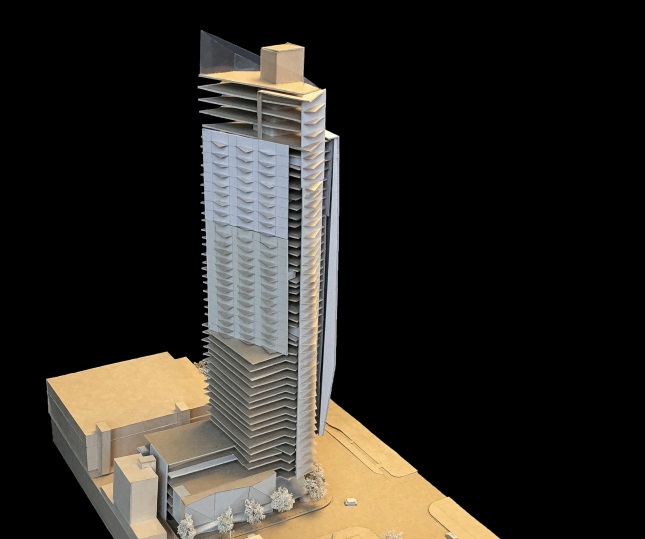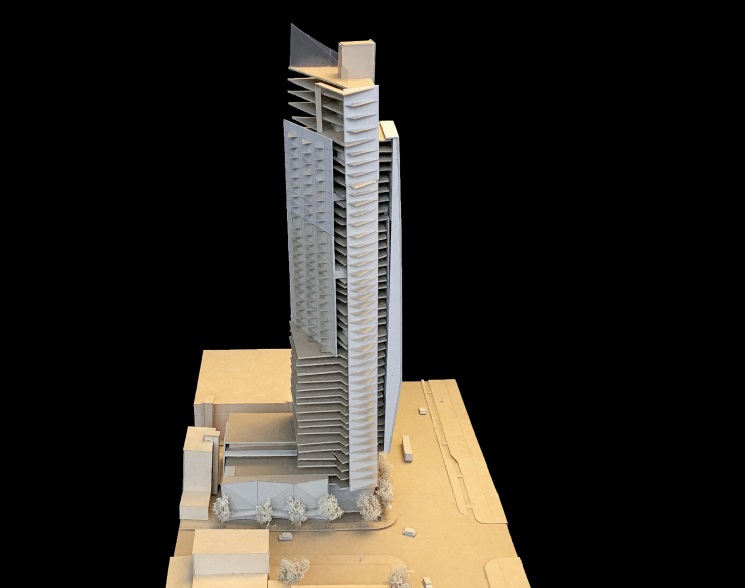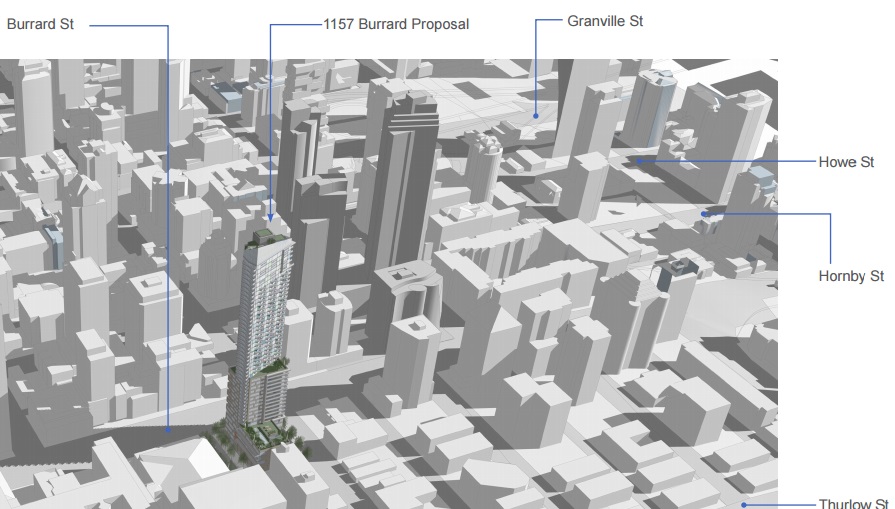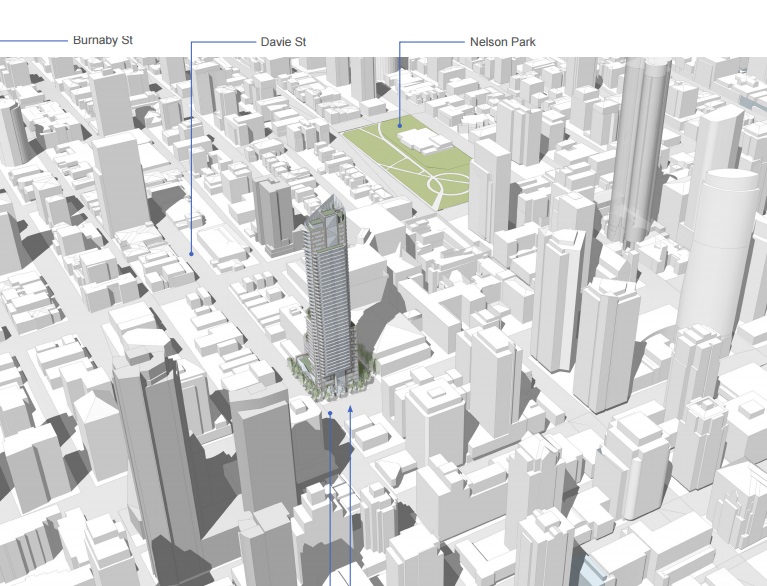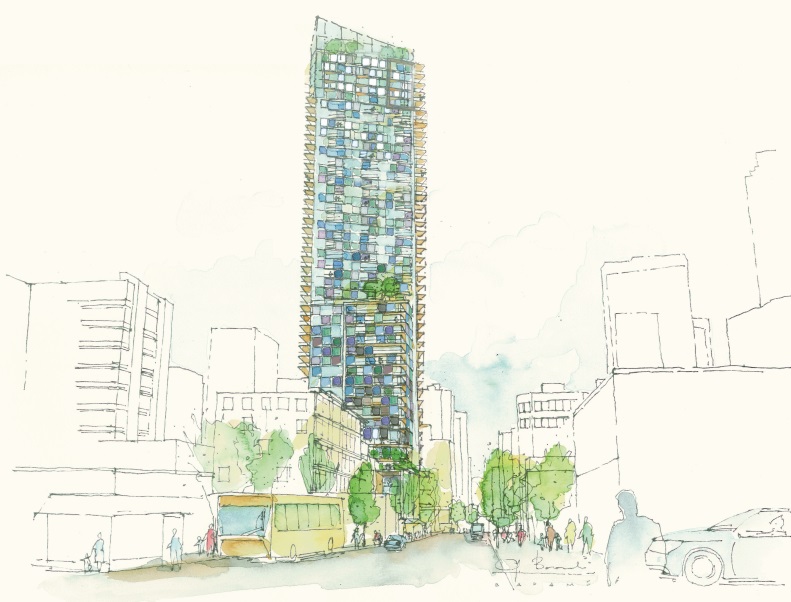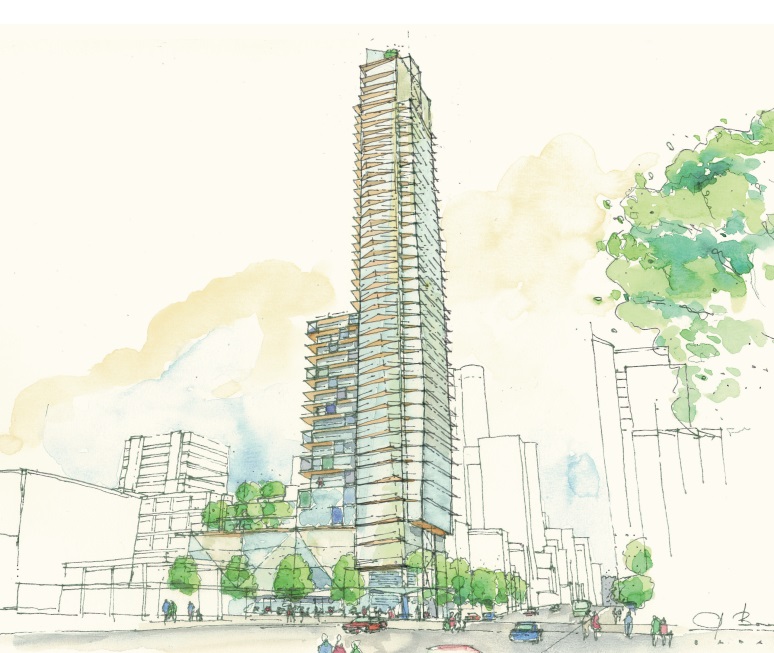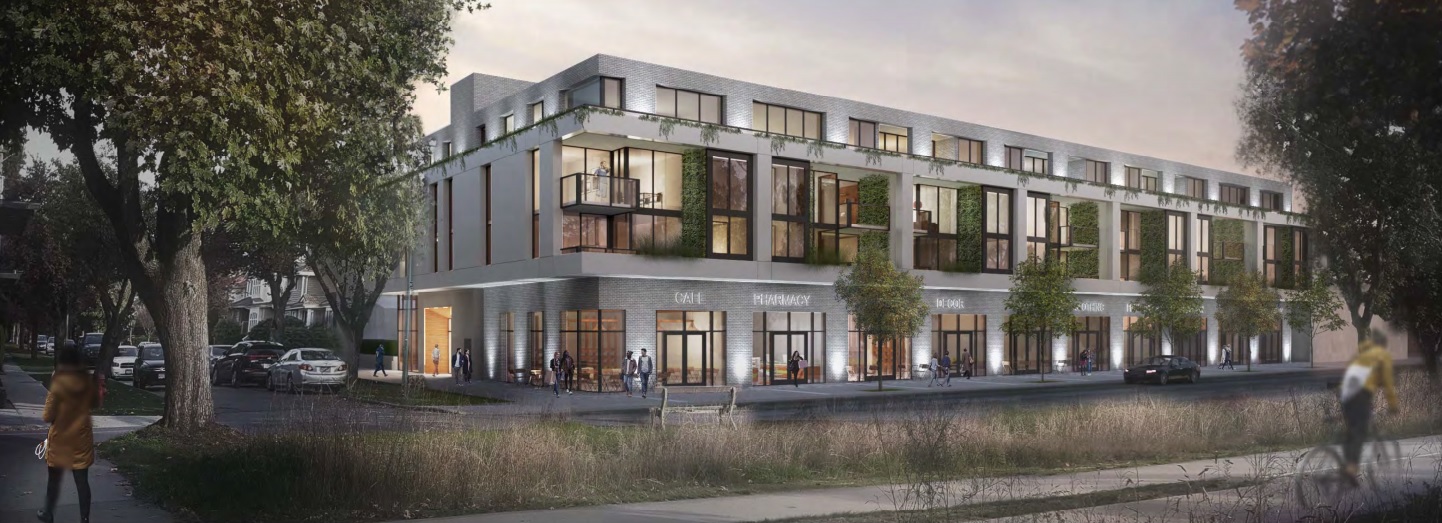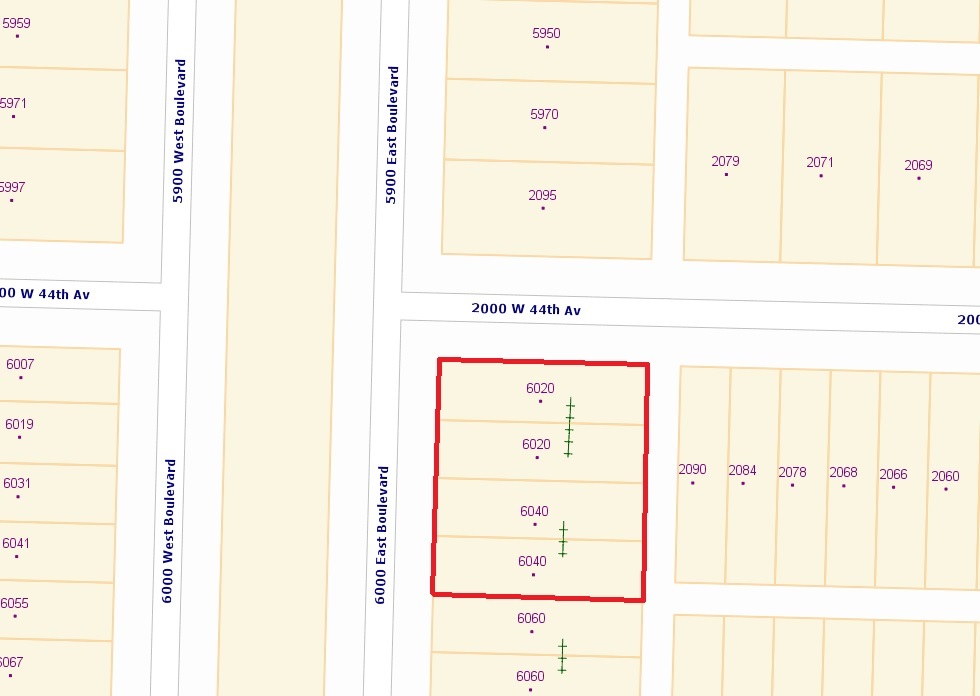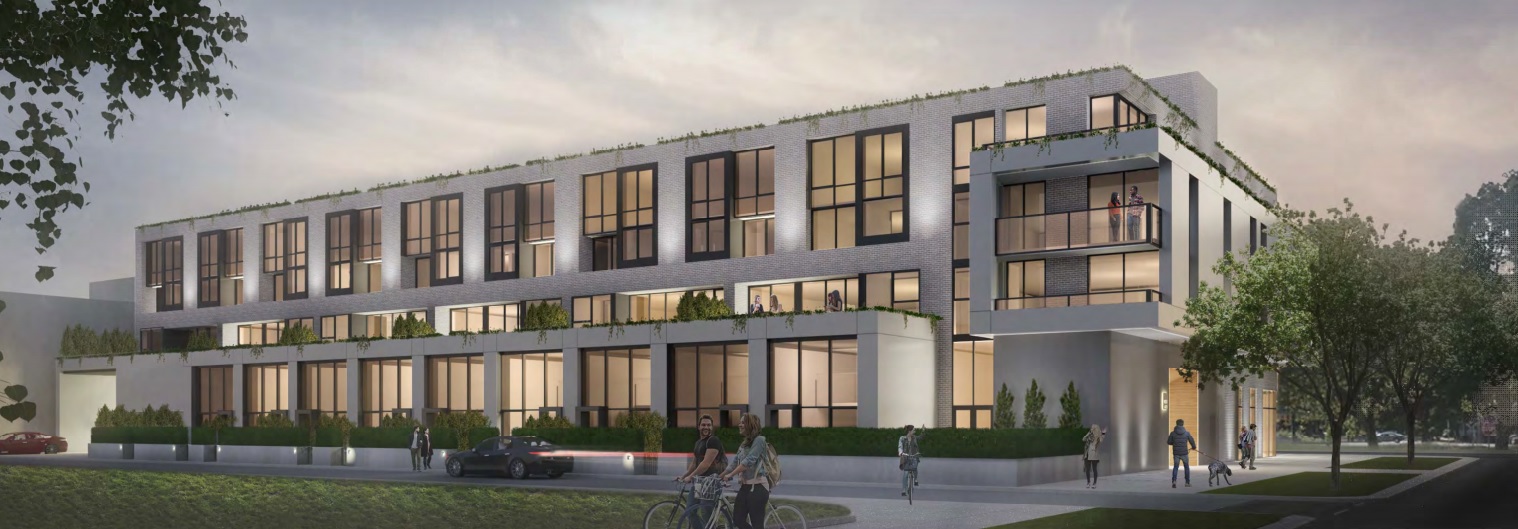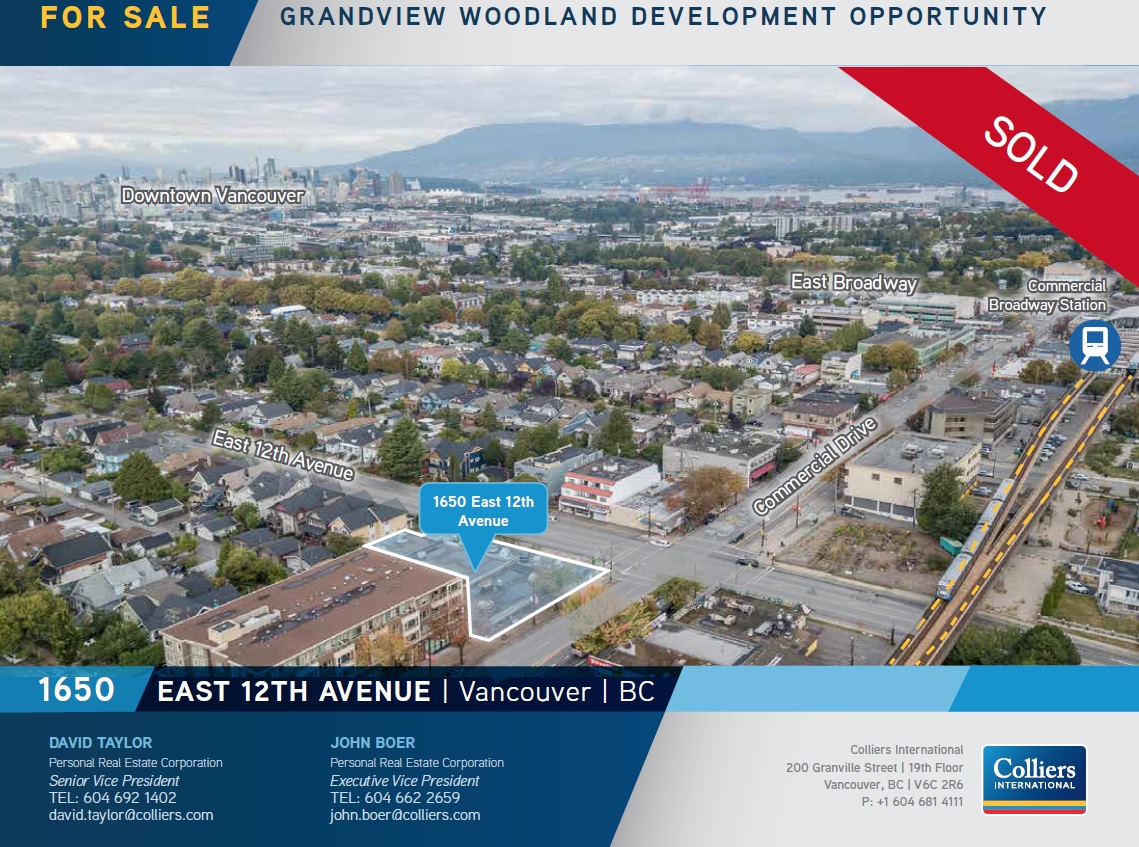A rezoning application has been submitted by Prima Properties for 1157 Burrard Street, a former gas station site at the Northwest corner of Burrard and Davie Streets that has been used as a community garden for several years.
The 21,605 SF site was designated for rezoning in 2014 under the West End Community Plan. It is currently zoned DD (Downtown District) and C-5 (Commercial).
The plan for the site is a 47-storey mixed-use tower that includes:
- 236 condo units;
- 50 hotel units or 50 more residential units;
- 65 studios, 111 one bedrooms & 110 two-bedrooms;
- building height of 480 ft.;
- a total density of 13.99 FSR;
- 25,000 SF of commercial space, including;
- 17,000 SF of office space;
- a 37-space public childcare facility
- 265 vehicle parking stalls and 400 bicycle spaces.
The application describes the design rationale: “The project proposes a new benchmark for site and city-specific architectural creativity and excellence through several distinctive measures. The west façade is proposed as a dynamic ever-changing mosaic responding to solar movement. In the morning when no direct sun falls on the elevation, the façade forms a sleek glass envelope animated by balconies. As the sun comes around to the south and west, exterior vertical solar control blinds start to animate the façade, with the sun exposure lowering them sequentially. As the sun rotates further to the west, the
blinds gradually form a veil, a pixilated abstraction of the Westcoast landscape ground to sea to sky. As afternoon turns to evening, the blinds retract once again to reveal the glowing glass envelope by night, as lights illuminate from the inside. The blinds have both an aesthetic and a sustainable design role, reducing solar heat gain and glare from low angle west sun. The concept is inspired by the Electra, the former BC Hydro building on Burrard Street. Electra makes explicit reference to the Westcoast landscape in its design and ornamentation, a major innovation at the time the tower was built.
In addition to the dynamic nature of the west façade–visible from both Burrard Street and Davie Village– the building is shaped like a flatiron as you approach the Downtown along Burrard Street. Consequently, the building is exceptionally slender compared to other towers. The balconies along the leading edge further animate this impression, by faceting towards the west as the tower rises. This shape forms an invitation towards Davie Village
and the West End as the tower addresses ceremonial Burrard Street. At grade, the corner plaza provides a public destination, welcoming visitors to Davie Village. The building canopy gathers rainwater and directs it to a small symbolic wetland at the corner, providing a pleasant place to gather and evoking the Westcoast landscape concept of the building. The project elevators offer outlook to Burrard Street in the podium and at the rooftop, providing spectacular views out for building users. At the rooftop a viewing platform forms part of the Residential Amenity with vistas to the fireworks of English Bay.”
This application is being considered under the West End Community Plan and the Rezoning Policy for the West End.
The architect for the project is Merrick Architecture.
The full application can be viewed here: https://rezoning.vancouver.ca/applications/1157burrard/index.htm



